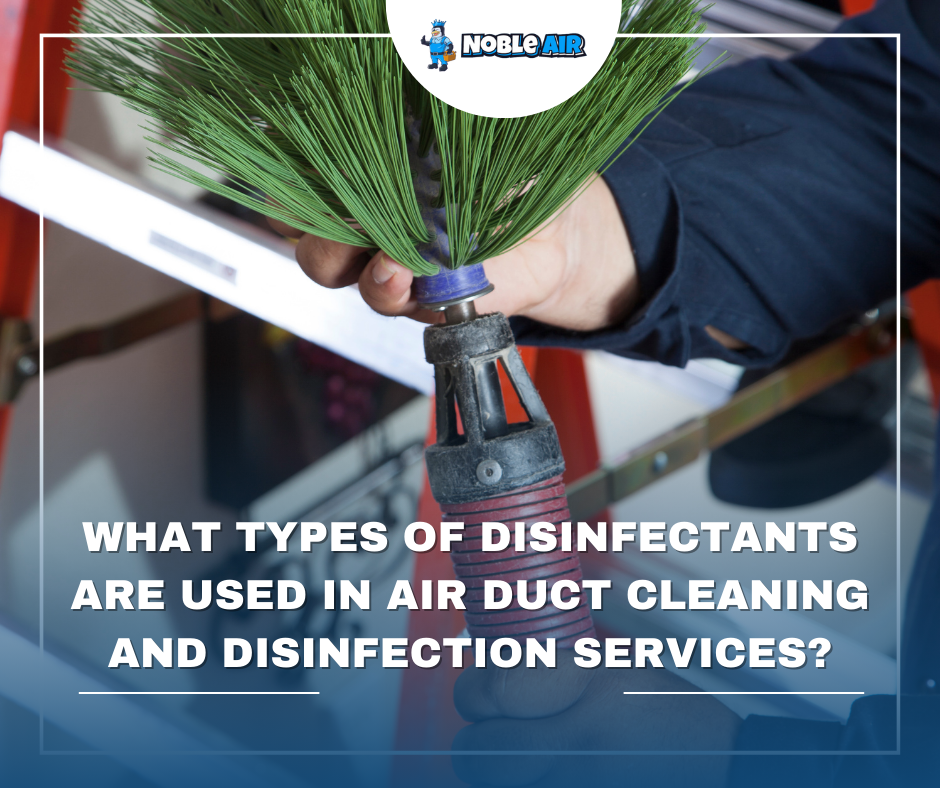The realm of air duct cleaning and disinfection services is akin to a vast orchestra, where each instrument or element plays an integral role in creating the perfect symphony. Among these instrumental components, disinfectants are like the conductors that guide this ensemble, ensuring a harmonious outcome – clean and sanitized air ducts.
These agents hold immense importance not only for maintaining optimal performance of heating, ventilation and air conditioning (HVAC) systems but also for safeguarding indoor air quality by eliminating harmful pathogens. With their diverse capabilities ranging from bactericidal to fungicidal properties, they act as vanguards against potential health risks associated with contaminated HVAC systems.
As custodians of indoor environmental hygiene, these disinfectants come in various types, each possessing unique characteristics that cater to specific cleaning needs and challenges. The selection of appropriate sanitizing agent therefore becomes a critical factor in delivering effective HVAC maintenance services. It requires an astute understanding of different disinfectant categories along with their respective efficacy against particular microbial contaminants.
This article aims to shed light on some commonly used varieties while providing insights into their utilization within professional air duct cleaning procedures. Embracing such knowledge will empower readers to make informed decisions regarding the upkeep of their HVAC systems and ultimately foster a sense of belonging towards this shared cause for cleaner indoor environments.
Exploring the Variety of Sanitizing Agents in HVAC Maintenance
Within the realm of HVAC maintenance, a diverse array of sanitizing agents, ranging from chemical disinfectants to eco-friendly solutions, are employed to ensure optimal air quality and minimize microbial contamination.
Prominent among these are quaternary ammonium compounds, hydrogen peroxide-based cleaners, and chlorine dioxide solutions. Quaternary ammonium compounds or ‘quats’ are popular for their broad-spectrum antimicrobial properties and low toxicity levels. These chemicals are highly effective against fungi, bacteria, and viruses that often inhabit air ducts.
Meanwhile, hydrogen peroxide-based cleaners offer an eco-friendlier alternative while maintaining substantial potency against microorganisms. This solution decomposes into water and oxygen upon use leaving behind no harmful residues.
Lastly, chlorine dioxide is lauded for its potent oxidizing abilities which can rapidly neutralize various pathogens.
Advancements in HVAC cleaning technology have also led to the adoption of ultraviolet (UV) light as a non-chemical disinfectant method. UV-C light specifically has been recognized for its germicidal capabilities; it works by damaging the DNA of microbes thereby inhibiting their ability to replicate – an invaluable asset in preventing the spread of potentially harmful organisms within ventilation systems.
Furthermore, there’s a growing trend towards botanical disinfectants which utilize plant extracts such as thymol derived from thyme oil known for its strong antiseptic properties without posing risks to human health or contributing negatively to indoor air quality.
As part of the wider community interested in maintaining clean environments particularly amidst recent global health challenges – understanding these various cleaning approaches fosters a sense of belonging through shared knowledge on how best we can safeguard our spaces against airborne contaminants.
READ MORE:
How Often Should I Schedule Air Duct Cleaning And Disinfection Services For My Home Or Business?
Why Is Air Duct Cleaning And Disinfection Important For Indoor Air Quality?


